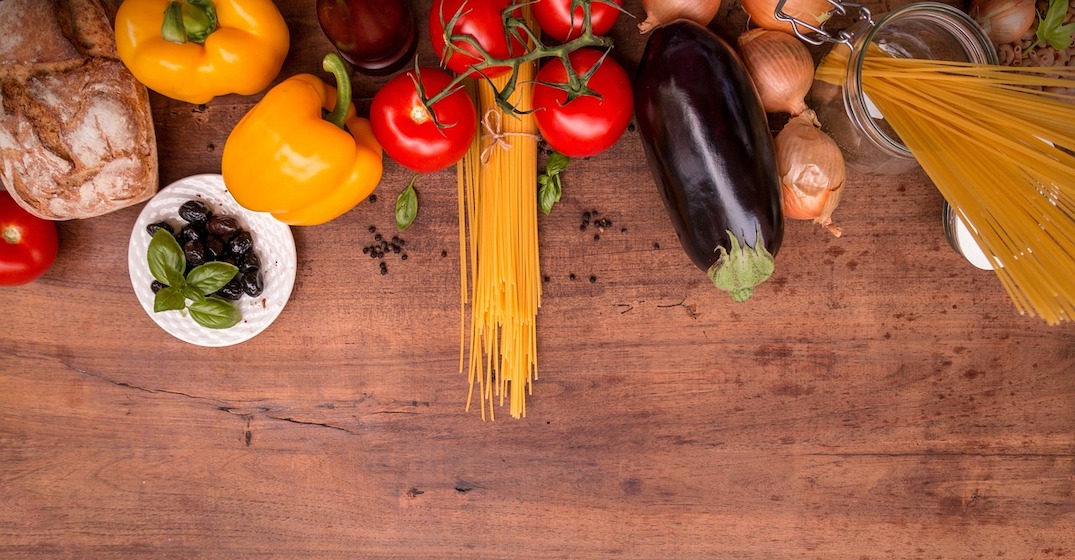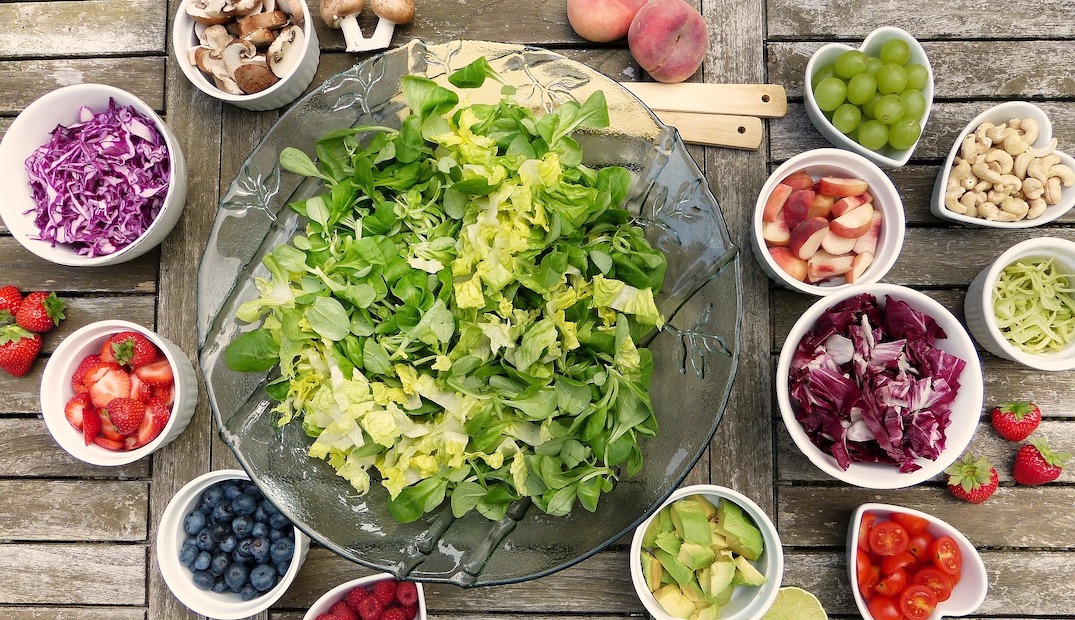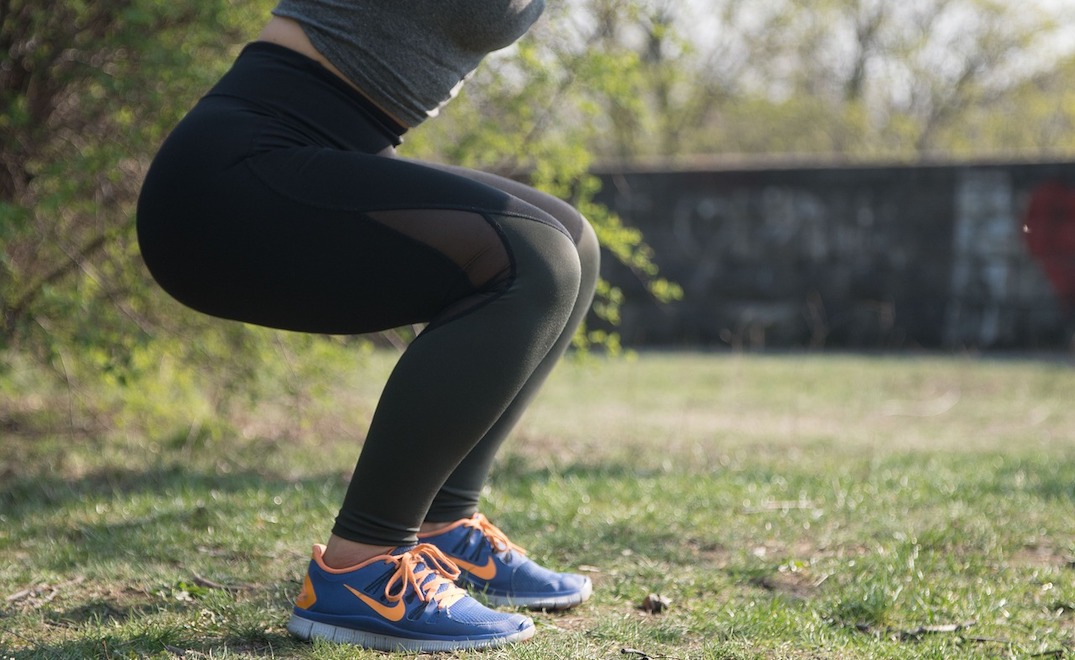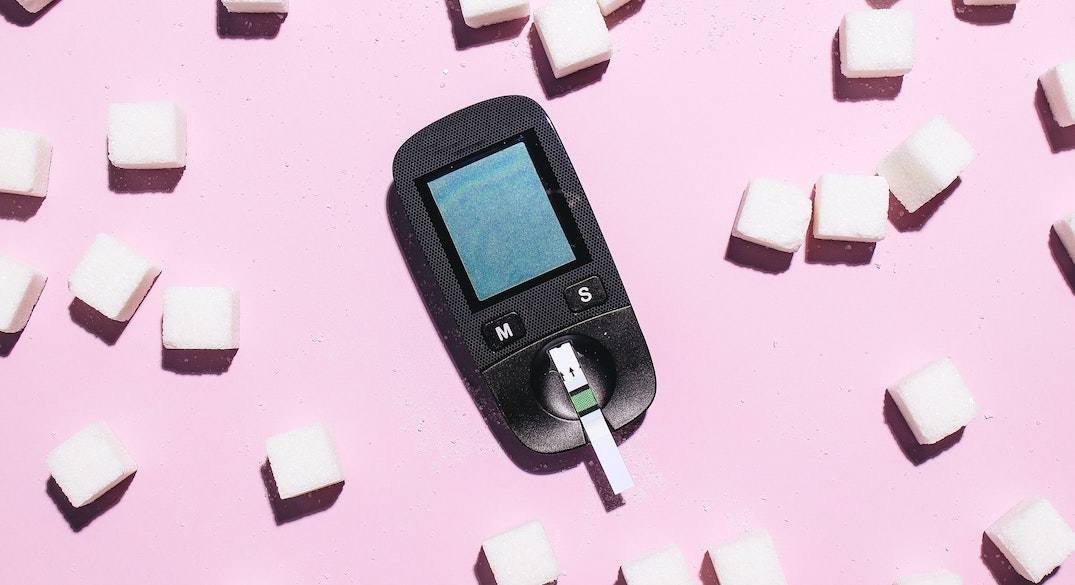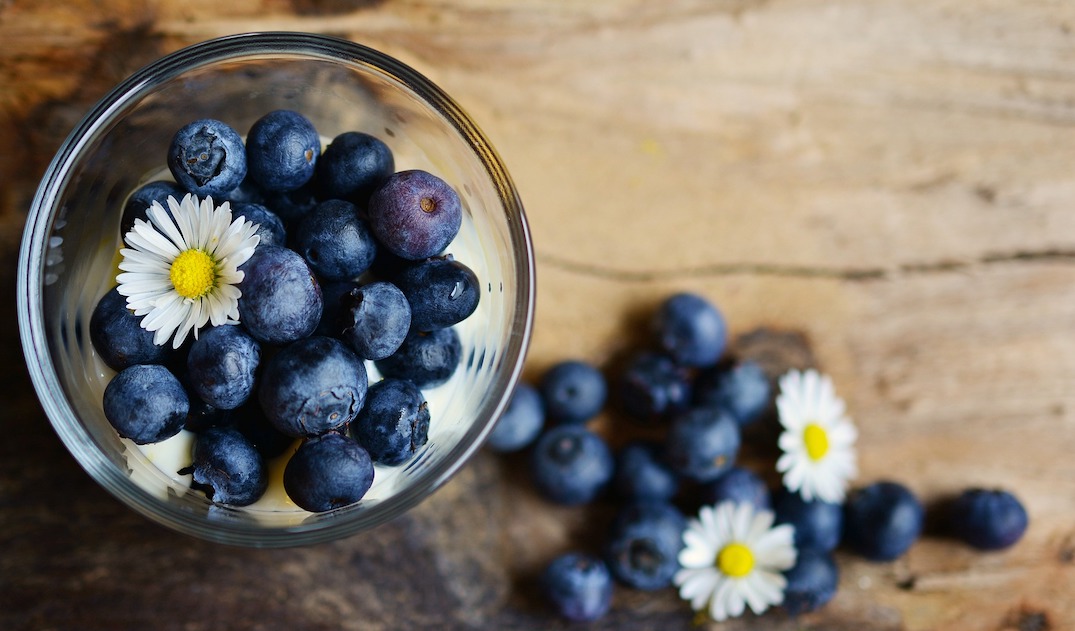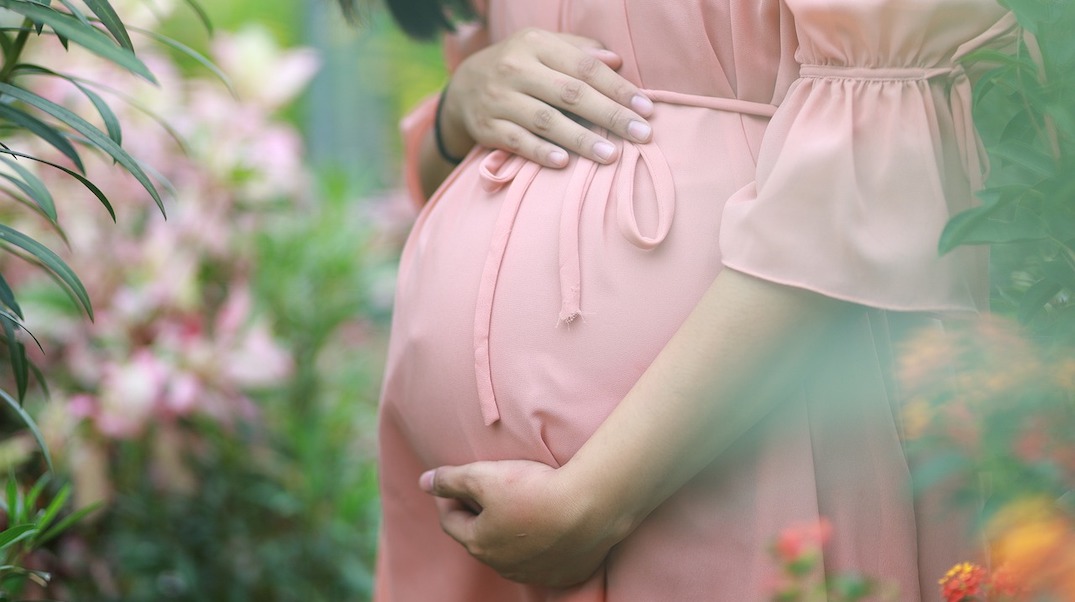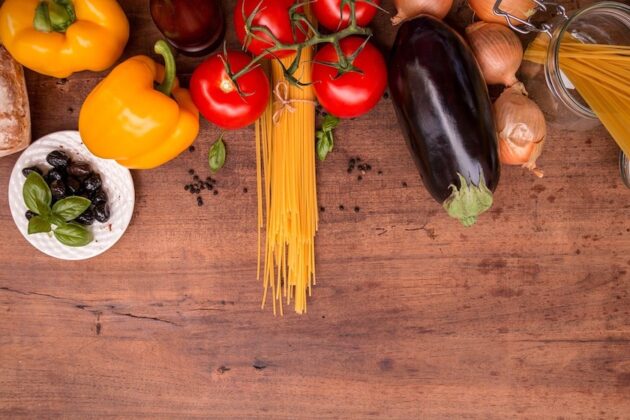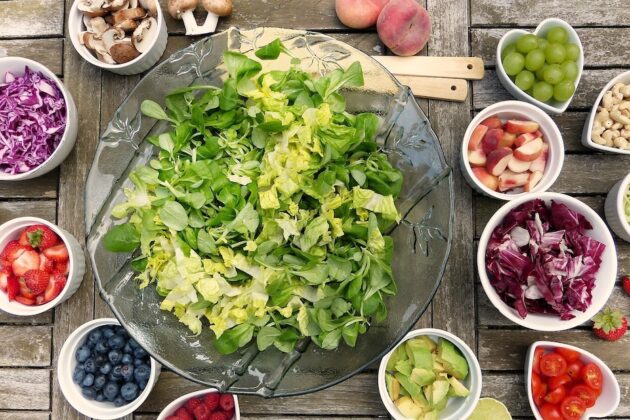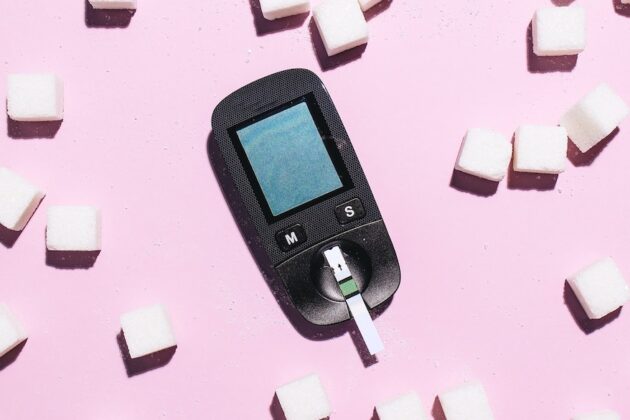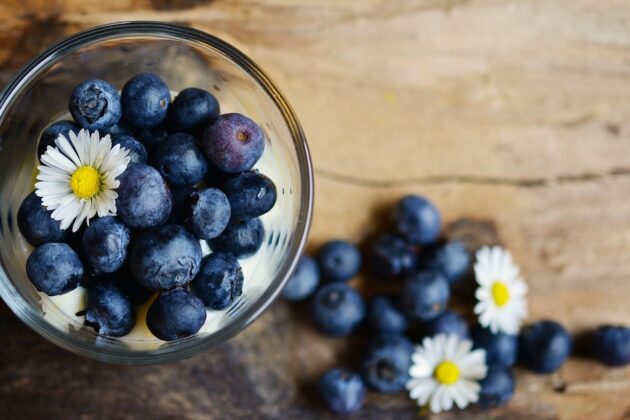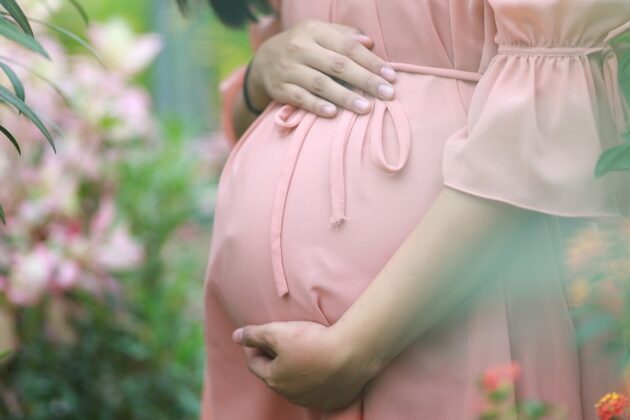Diet to Reduce High Blood Pressure During Pregnancy
High blood pressure is not just an “old person’s” disease. As many as 13% of pregnancies in the U.S. are complicated by high blood pressure—even among women who had normal blood pressure before becoming pregnant.
While having high blood pressure or “hypertension” before pregnancy often means the problem will persist during the pregnancy, many cases of pregnancy-associated hypertension (PAH) occur without any preexisting disease. The cause of PAH is poorly understood.
Hypertension in pregnancy is risky for you and your baby. It can lead to preeclampsia, which is one of the most severe types of PAH. Preeclampsia causes seizures, poor fetal growth, prematurity, and possible fetal and maternal death.
Fortunately, you can reduce blood pressure while pregnant by eating certain foods—such as fresh fruits, avocados, beans and lentils, and nuts—and avoiding those that can make it worse—such as salty foods, processed foods, red meat, saturated fats, and drinks high in sugar.
This guide goes over dietary recommendations known to help reduce blood pressure. You’ll learn about the different types of high blood pressure that can occur during pregnancy, the risks associated with them, and how a prenatal nutritionist can help you manage your blood pressure while you’re pregnant.

Healthy mom, healthy baby: Get support from a prenatal dietitian
90% of Zaya Care patients pay $0 for one-on-one counseling with a Registered Dietitan
Foods that can help lower high blood pressure during pregnancy
There are foods that lower blood pressure simply by having them in abundance in your diet. Many contain electrolytes that help the kidneys get rid of fluids in your blood vessels. This naturally reduces the pressure inside them.
Which foods should you focus on to reduce high blood pressure? Here is a good selection of food to choose from:
- Fresh fruits. Most fruits are high in potassium and naturally lower blood pressure. The fruits with the highest potassium content include bananas, passionfruit, jackfruit, apricots, oranges, nectarine, cantaloupe, and grapefruit.
- Juices. Fruit juices are also great options for reducing blood pressure. Orange juice, prune juice, and most vegetable juices contain lots of potassium.
- Avocados. These have nearly the same blood-pressure-lowering properties as bananas and have healthy monounsaturated fats.
- Dried fruits. Because fruits are dried, you get concentrated doses of potassium to lower your blood pressure. Dried bananas and apricots have the highest potassium content; however, you can eat raisins, dried apples, prunes, papaya, and figs as well.
- Vegetables. Many vegetables are packed with as much potassium as fruits. Eat them fresh for the best benefit. Among veggies with potassium, spinach tops the list. Other great blood-pressure-lowering vegetables include beets, sweet potatoes, russet potatoes (peels included), carrots, acorn squash, and broccoli.
- Beans and lentils. These are great for soups or mashed into a dip for crackers or tortillas.
- Coconut water. Instead of water, try cold and refreshing coconut water, which contains potassium to lower your blood pressure.
- Dairy products. These are not incredibly high in potassium but will still be good choices for snacking. Yogurt and plant-based milk (soy or almond milk) have been shown to reduce blood pressure in research studies.
- Meat and fish. Among these, chicken and salmon are the best options.
- Nuts. Both almonds and cashews are excellent to snack on. Mix them with dried fruit for added blood pressure-lowering effects.
Both the Mediterranean diet and the DASH diet have demonstrated effects on lowering blood pressure. They are also healthy in other ways because they have the healthy fats you need during pregnancy.
Foods to avoid with high blood pressure during pregnancy
There are foods that will not help you reduce your blood pressure and may make it more difficult to keep your blood pressure down if you consume them:
- Salty snack foods. Salty snack foods contain sodium, which causes fluid to build up in your arteries, raising your blood pressure. Some of these may not even taste salty. Avoid chips, French fries, popcorn, tacos, and burritos.
- Processed bread and sandwiches. Bread, pizza, and rolls are higher in sodium than you’d suspect by tasting them. Sandwiches with cured meats, bacon, and cold cuts have added salt by virtue of the processed meats. A peanut butter sandwich has the added sodium (salt) that comes from the peanuts.
- Soups. Canned soups and some you make at home are also higher in sodium than they taste. If you are making soup, you can adjust the salt content of the soup—something you can’t do with canned soups.
- Processed desserts. These do not necessarily raise your blood pressure, but they do cause unintended weight gain. A higher weight means you will be more likely to suffer from hypertension or high blood pressure during pregnancy.
- Packaged meals. These are easy to make but contain much more sodium than you’ll get in foods you make at home.
- Red meat. Red meats are metabolized in the body in ways that raise your blood pressure, even if you don’t salt your meat. Beef, lamb, veal, venison, and pork are to be avoided if you want to keep your blood pressure down.
- High-sugar drinks. These include sodas and energy drinks. Sugar promotes weight gain, and caffeine brings on high blood pressure by constricting your arteries.
- Saturated fats. Saturated fats cause weight gain and are known to raise your blood pressure. Foods to avoid include chocolate desserts, pastries, pies, cakes, donuts, and full-fat dairy products. Lard, butter, ghee, and margarine also have saturated fats. It’s worth noting that eating a keto diet isn’t generally considered safe during pregnancy.
- Condiments. We don’t often think of condiments as sodium-containing foods; however, ketchup, soy sauce, fish sauce, chili sauce, and salad dressings have a lot of added sodium.
- Caffeine. Caffeine will raise your blood pressure and should be avoided if your blood pressure is already elevated. Sodas, black tea, and coffee can be replaced with green tea to help you lower your blood pressure.

Healthy mom, healthy baby: Get support from a prenatal dietitian
90% of Zaya Care patients pay $0 for one-on-one counseling with a Registered Dietitan
Other dieting tips for those with high blood pressure during pregnancy
There is no reason you need to lose weight while pregnant, even when you have high blood pressure. There are some helpful tips, however, that will make it easier for you to eat well and stay healthy while pregnant.
- Eat several small meals daily. You can also have snacks in between to keep you feeling full. The goal here is to stay within the weight recommendations for your pregnancy.
- Pack snacks with you. Because most snacking outside of the home involves highly-salted fast food, you would do better to bring food from home to snack on. Plan healthy snacks at the beginning of the week so you have plenty of snacks for your work week.
- Salt your food sparingly. If you leave salt off the table or use half the salt you would normally use for cooking, you will adjust to the change in taste quickly. Lower salt will help reduce your blood pressure naturally.
- Use potassium-containing salt products. Potassium salts are milder in taste compared to sodium chloride (table salt). There are salts you can buy that have mostly potassium or a mix of sodium and potassium chloride for use in cooking or at the table.
- Spice it up. Generally, you will be less likely to require salt of any kind if you add extra spices. Spices are healthy additives to food and add flavor without adding extra table salt.
How a prenatal nutritionist can help
It can be challenging to know which foods will raise your blood pressure or to determine healthy alternatives to your favorite foods. If you find yourself struggling to put together healthy meal plans or shopping lists of foods to buy, consider seeing a prenatal nutritionist or high blood pressure nutritionist.
A prenatal nutritionist is trained in nutrition during pregnancy. They can study your diet and determine the foods that will help keep your blood pressure controlled. They can help with recipe planning and teach you to read food labels, so you can count sodium and potassium amounts in your diet.
If you are already on a restricted or alternative diet, your nutritionist can help optimize your daily diet while keeping in mind your restrictions. You can see the nutritionist throughout your pregnancy to help you stay within the recommended food guidelines for lowering blood pressure.
A prenatal nutritionist can help with many other things such as managing gestational diabetes or heartburn and acid reflux, making sure you’re getting enough protein during pregnancy, and helping you figure out how many calories you need in each trimester.
Here at Zaya Care, we can match you with a pregnancy nutritionist that accepts your health insurance and offers you your preferred visit type. Simply choose one that suits your needs and book online!
Other ways to lower high blood pressure during pregnancy
Maintaining your blood pressure in the normal range is not only about your dietary choices. There are things you can do in other areas of your life to remain healthy, even if you have higher than normal blood pressure values.
- Follow your doctor’s activity recommendations. Your doctor will generally recommend that you remain active during your pregnancy; however, if you already have high blood pressure or preeclampsia, they may recommend bed rest or modified bed rest. In such cases, you’ll need to avoid heavy activity and perhaps modify your schedule to include bedrest or “couch rest.”
- Reduce daily stress. Stress will usually raise your blood pressure, even when you’re healthy and not pregnant. If you already have high blood pressure, added stress will only cause elevations in blood pressure you can’t afford to have.
- Get plenty of sleep. Sleep is the time when your heart rate and blood pressure drop. If your blood pressure doesn’t drop long enough during the night, you will have more difficulty maintaining normal blood pressure during the day. Lack of sleep is an added stress to your body in the daytime, while seven to eight hours of good sleep will help reduce your daytime blood pressure and pulse.
- Take medications if needed. If your doctor recommends low-dose aspirin or other medications to reduce complications of high blood pressure, be sure to take them. The American College of Obstetrics and Gynecology says that low-dose aspirin is safe if your doctor recommends it to avoid this pregnancy complication.
- Maintain your pregnancy weight gain within recommended limits. If you have excess weight gain during your pregnancy, it will put added stress on your body that will result in more elevations in blood pressure than you can risk later in pregnancy. This doesn’t mean dieting—as losing weight during pregnancy isn’t safe—just remain within the guidelines your healthcare provider recommends.
Types of high blood pressure during pregnancy
High blood pressure in pregnancy is not a single entity. There are four different disorders in pregnancy that have high blood pressure as one of the main features:
- Chronic hypertension. Chronic hypertension is a condition you may have had before becoming pregnant. Your body will adapt somewhat during pregnancy by having lower blood pressure in the early stages; however, later in pregnancy, you may need medications or bed rest to account for blood pressure elevations. Not all medications for high blood pressure are safe during pregnancy, so your doctor may recommend some changes in those you currently take.
- Gestational hypertension. This is hypertension during pregnancy only. It means you don’t have high blood pressure before becoming pregnant but develop it during pregnancy (usually in the second trimester or early third trimester). You will not generally need medications unless the blood pressure is markedly high and will usually have normal blood pressure after you deliver your baby.
- Preeclampsia. This is high blood pressure in pregnancy along with fluid retention and protein in your urine. It is important to take this very seriously, see your doctor regularly, and follow their recommendations to avoid developing eclampsia (seizures) and other severe pregnancy complications.
- HELLP Syndrome. This is the most severe form of preeclampsia. The term “HELLP” means “hemolysis, elevated liver enzymes, and low platelets” and it can be deadly. Your chances of dying are as much as 24%, while your baby’s chances of death can approach 70%.
Risks of high blood pressure during pregnancy
Lowering your blood pressure is essential for your health and the health of your baby. If you are unable to manage your blood pressure elevations or develop preeclampsia, the complications can be many.
Obstetrical complications
Short-term issues with your pregnancy include slow fetal weight gain, seizures, fetal death, preterm birth, and death from HELLP syndrome.
Non-obstetrical complications
These are complications that affect your health outside of pregnancy:
- Heart failure
- Pulmonary edema (fluid in the lungs)
- Enlarged heart
- Risk of heart disease later in life
- Stroke
- Kidney failure (acute or chronic)
- Liver failure
- Internal bleeding
Be sure to get help if you need to reduce your blood pressure. High blood pressure does not always have symptoms. You need to manage this condition even if you feel well.
See your healthcare provider often to help manage your condition and follow up after your pregnancy to make sure your blood pressure normalizes.

Healthy mom, healthy baby: Get support from a prenatal dietitian
90% of Zaya Care patients pay $0 for one-on-one counseling with a Registered Dietitan
High blood pressure is not just an “old person’s” disease. As many as 13% of pregnancies in the U.S. are complicated by high blood pressure—even among women who had normal blood pressure before becoming pregnant.
While having high blood pressure or “hypertension” before pregnancy often means the problem will persist during the pregnancy, many cases of pregnancy-associated hypertension (PAH) occur without any preexisting disease. The cause of PAH is poorly understood.
Hypertension in pregnancy is risky for you and your baby. It can lead to preeclampsia, which is one of the most severe types of PAH. Preeclampsia causes seizures, poor fetal growth, prematurity, and possible fetal and maternal death.
Fortunately, you can reduce blood pressure while pregnant by eating certain foods—such as fresh fruits, avocados, beans and lentils, and nuts—and avoiding those that can make it worse—such as salty foods, processed foods, red meat, saturated fats, and drinks high in sugar.
This guide goes over dietary recommendations known to help reduce blood pressure. You’ll learn about the different types of high blood pressure that can occur during pregnancy, the risks associated with them, and how a prenatal nutritionist can help you manage your blood pressure while you’re pregnant.

Healthy mom, healthy baby: Get support from a prenatal dietitian
90% of Zaya Care patients pay $0 for one-on-one counseling with a Registered Dietitan
Foods that can help lower high blood pressure during pregnancy
There are foods that lower blood pressure simply by having them in abundance in your diet. Many contain electrolytes that help the kidneys get rid of fluids in your blood vessels. This naturally reduces the pressure inside them.
Which foods should you focus on to reduce high blood pressure? Here is a good selection of food to choose from:
- Fresh fruits. Most fruits are high in potassium and naturally lower blood pressure. The fruits with the highest potassium content include bananas, passionfruit, jackfruit, apricots, oranges, nectarine, cantaloupe, and grapefruit.
- Juices. Fruit juices are also great options for reducing blood pressure. Orange juice, prune juice, and most vegetable juices contain lots of potassium.
- Avocados. These have nearly the same blood-pressure-lowering properties as bananas and have healthy monounsaturated fats.
- Dried fruits. Because fruits are dried, you get concentrated doses of potassium to lower your blood pressure. Dried bananas and apricots have the highest potassium content; however, you can eat raisins, dried apples, prunes, papaya, and figs as well.
- Vegetables. Many vegetables are packed with as much potassium as fruits. Eat them fresh for the best benefit. Among veggies with potassium, spinach tops the list. Other great blood-pressure-lowering vegetables include beets, sweet potatoes, russet potatoes (peels included), carrots, acorn squash, and broccoli.
- Beans and lentils. These are great for soups or mashed into a dip for crackers or tortillas.
- Coconut water. Instead of water, try cold and refreshing coconut water, which contains potassium to lower your blood pressure.
- Dairy products. These are not incredibly high in potassium but will still be good choices for snacking. Yogurt and plant-based milk (soy or almond milk) have been shown to reduce blood pressure in research studies.
- Meat and fish. Among these, chicken and salmon are the best options.
- Nuts. Both almonds and cashews are excellent to snack on. Mix them with dried fruit for added blood pressure-lowering effects.
Both the Mediterranean diet and the DASH diet have demonstrated effects on lowering blood pressure. They are also healthy in other ways because they have the healthy fats you need during pregnancy.
Foods to avoid with high blood pressure during pregnancy
There are foods that will not help you reduce your blood pressure and may make it more difficult to keep your blood pressure down if you consume them:
- Salty snack foods. Salty snack foods contain sodium, which causes fluid to build up in your arteries, raising your blood pressure. Some of these may not even taste salty. Avoid chips, French fries, popcorn, tacos, and burritos.
- Processed bread and sandwiches. Bread, pizza, and rolls are higher in sodium than you’d suspect by tasting them. Sandwiches with cured meats, bacon, and cold cuts have added salt by virtue of the processed meats. A peanut butter sandwich has the added sodium (salt) that comes from the peanuts.
- Soups. Canned soups and some you make at home are also higher in sodium than they taste. If you are making soup, you can adjust the salt content of the soup—something you can’t do with canned soups.
- Processed desserts. These do not necessarily raise your blood pressure, but they do cause unintended weight gain. A higher weight means you will be more likely to suffer from hypertension or high blood pressure during pregnancy.
- Packaged meals. These are easy to make but contain much more sodium than you’ll get in foods you make at home.
- Red meat. Red meats are metabolized in the body in ways that raise your blood pressure, even if you don’t salt your meat. Beef, lamb, veal, venison, and pork are to be avoided if you want to keep your blood pressure down.
- High-sugar drinks. These include sodas and energy drinks. Sugar promotes weight gain, and caffeine brings on high blood pressure by constricting your arteries.
- Saturated fats. Saturated fats cause weight gain and are known to raise your blood pressure. Foods to avoid include chocolate desserts, pastries, pies, cakes, donuts, and full-fat dairy products. Lard, butter, ghee, and margarine also have saturated fats. It’s worth noting that eating a keto diet isn’t generally considered safe during pregnancy.
- Condiments. We don’t often think of condiments as sodium-containing foods; however, ketchup, soy sauce, fish sauce, chili sauce, and salad dressings have a lot of added sodium.
- Caffeine. Caffeine will raise your blood pressure and should be avoided if your blood pressure is already elevated. Sodas, black tea, and coffee can be replaced with green tea to help you lower your blood pressure.

Healthy mom, healthy baby: Get support from a prenatal dietitian
90% of Zaya Care patients pay $0 for one-on-one counseling with a Registered Dietitan
Other dieting tips for those with high blood pressure during pregnancy
There is no reason you need to lose weight while pregnant, even when you have high blood pressure. There are some helpful tips, however, that will make it easier for you to eat well and stay healthy while pregnant.
- Eat several small meals daily. You can also have snacks in between to keep you feeling full. The goal here is to stay within the weight recommendations for your pregnancy.
- Pack snacks with you. Because most snacking outside of the home involves highly-salted fast food, you would do better to bring food from home to snack on. Plan healthy snacks at the beginning of the week so you have plenty of snacks for your work week.
- Salt your food sparingly. If you leave salt off the table or use half the salt you would normally use for cooking, you will adjust to the change in taste quickly. Lower salt will help reduce your blood pressure naturally.
- Use potassium-containing salt products. Potassium salts are milder in taste compared to sodium chloride (table salt). There are salts you can buy that have mostly potassium or a mix of sodium and potassium chloride for use in cooking or at the table.
- Spice it up. Generally, you will be less likely to require salt of any kind if you add extra spices. Spices are healthy additives to food and add flavor without adding extra table salt.
How a prenatal nutritionist can help
It can be challenging to know which foods will raise your blood pressure or to determine healthy alternatives to your favorite foods. If you find yourself struggling to put together healthy meal plans or shopping lists of foods to buy, consider seeing a prenatal nutritionist or high blood pressure nutritionist.
A prenatal nutritionist is trained in nutrition during pregnancy. They can study your diet and determine the foods that will help keep your blood pressure controlled. They can help with recipe planning and teach you to read food labels, so you can count sodium and potassium amounts in your diet.
If you are already on a restricted or alternative diet, your nutritionist can help optimize your daily diet while keeping in mind your restrictions. You can see the nutritionist throughout your pregnancy to help you stay within the recommended food guidelines for lowering blood pressure.
A prenatal nutritionist can help with many other things such as managing gestational diabetes or heartburn and acid reflux, making sure you’re getting enough protein during pregnancy, and helping you figure out how many calories you need in each trimester.
Here at Zaya Care, we can match you with a pregnancy nutritionist that accepts your health insurance and offers you your preferred visit type. Simply choose one that suits your needs and book online!
Other ways to lower high blood pressure during pregnancy
Maintaining your blood pressure in the normal range is not only about your dietary choices. There are things you can do in other areas of your life to remain healthy, even if you have higher than normal blood pressure values.
- Follow your doctor’s activity recommendations. Your doctor will generally recommend that you remain active during your pregnancy; however, if you already have high blood pressure or preeclampsia, they may recommend bed rest or modified bed rest. In such cases, you’ll need to avoid heavy activity and perhaps modify your schedule to include bedrest or “couch rest.”
- Reduce daily stress. Stress will usually raise your blood pressure, even when you’re healthy and not pregnant. If you already have high blood pressure, added stress will only cause elevations in blood pressure you can’t afford to have.
- Get plenty of sleep. Sleep is the time when your heart rate and blood pressure drop. If your blood pressure doesn’t drop long enough during the night, you will have more difficulty maintaining normal blood pressure during the day. Lack of sleep is an added stress to your body in the daytime, while seven to eight hours of good sleep will help reduce your daytime blood pressure and pulse.
- Take medications if needed. If your doctor recommends low-dose aspirin or other medications to reduce complications of high blood pressure, be sure to take them. The American College of Obstetrics and Gynecology says that low-dose aspirin is safe if your doctor recommends it to avoid this pregnancy complication.
- Maintain your pregnancy weight gain within recommended limits. If you have excess weight gain during your pregnancy, it will put added stress on your body that will result in more elevations in blood pressure than you can risk later in pregnancy. This doesn’t mean dieting—as losing weight during pregnancy isn’t safe—just remain within the guidelines your healthcare provider recommends.
Types of high blood pressure during pregnancy
High blood pressure in pregnancy is not a single entity. There are four different disorders in pregnancy that have high blood pressure as one of the main features:
- Chronic hypertension. Chronic hypertension is a condition you may have had before becoming pregnant. Your body will adapt somewhat during pregnancy by having lower blood pressure in the early stages; however, later in pregnancy, you may need medications or bed rest to account for blood pressure elevations. Not all medications for high blood pressure are safe during pregnancy, so your doctor may recommend some changes in those you currently take.
- Gestational hypertension. This is hypertension during pregnancy only. It means you don’t have high blood pressure before becoming pregnant but develop it during pregnancy (usually in the second trimester or early third trimester). You will not generally need medications unless the blood pressure is markedly high and will usually have normal blood pressure after you deliver your baby.
- Preeclampsia. This is high blood pressure in pregnancy along with fluid retention and protein in your urine. It is important to take this very seriously, see your doctor regularly, and follow their recommendations to avoid developing eclampsia (seizures) and other severe pregnancy complications.
- HELLP Syndrome. This is the most severe form of preeclampsia. The term “HELLP” means “hemolysis, elevated liver enzymes, and low platelets” and it can be deadly. Your chances of dying are as much as 24%, while your baby’s chances of death can approach 70%.
Risks of high blood pressure during pregnancy
Lowering your blood pressure is essential for your health and the health of your baby. If you are unable to manage your blood pressure elevations or develop preeclampsia, the complications can be many.
Obstetrical complications
Short-term issues with your pregnancy include slow fetal weight gain, seizures, fetal death, preterm birth, and death from HELLP syndrome.
Non-obstetrical complications
These are complications that affect your health outside of pregnancy:
- Heart failure
- Pulmonary edema (fluid in the lungs)
- Enlarged heart
- Risk of heart disease later in life
- Stroke
- Kidney failure (acute or chronic)
- Liver failure
- Internal bleeding
Be sure to get help if you need to reduce your blood pressure. High blood pressure does not always have symptoms. You need to manage this condition even if you feel well.
See your healthcare provider often to help manage your condition and follow up after your pregnancy to make sure your blood pressure normalizes.

Healthy mom, healthy baby: Get support from a prenatal dietitian
90% of Zaya Care patients pay $0 for one-on-one counseling with a Registered Dietitan





